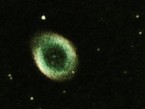Essentially imaging can be divided into two broad categories called short and long exposure astrophotography. Short exposure astrophotography does not require tracking of the object and can be done with a camera on a tripod or with a camera and telescope. In its simplest form a smartphone can be held up to the eyepiece on a telescope and an image instantly obtained. TShort exposure astrophotography is limited to about 30 to 60 seconds before star trails occur in the image.
Short exposure astrophotography is limited by the focal length of the imaging system used. The higher the magnification and focal length the less exposure time is available before star trails occur. In contrast, long exposure astrophotography requires more involved methods. A stable tracking mount is required to follow the object and to keep the system from experiencing unrelated movement during imaging. Some kind of guiding method is also required, either manual or auto-guiding to reposition the object in the field of view. These requirements become more stringent when the imaging is done at increasingly higher magnifications and longer exposure times.
The imaging system, method and post imaging processing software chosen is dependent on both the object to be imaged as well as the degree of image detail required. The bright planets such as Jupiter and Saturn are generally imaged with “lucky imaging” using a video method. Magnification to increase the size of the object in the field of view can be achieved by the attachment of extenders or barlows to the imaging system. Further the imaging exposure time would be dependent on whether the system was setup for short or long exposure as previously described. Generally, the resultant video file ( avi, ser ) would then be run through image processing software which would choose the best still images and then stack them creating one significantly more detailed image in the file formats of jpeg, tiff or fit.
The Moon lends itself to the above imaging method described for Jupiter, Saturn. In this case because the moon is so much closer, the video produces satisfying detail without the need of further processing. However, stacking of the resultant video would offer comparatively still more detail. Because the moon is a very bright object, second only to the Sun, single shot imaging is also possible. Also a series of single shot images can be stacked to achieve the same results.
Deep Sky Objects (DSO) such a nebulas, galaxies and star clusters are better imaged in most cases using long exposure astrophotography. These objects are relatively faint compared to the planets and require a longer overall exposure time. Imaging of DSO can be done using the short exposure method even with a camera and tripod on some of the more brighter objects such as the Andromeda Galaxy or The Orion Nebula and star clusters. This method may involve creating a series of images which are stacked for greater detail however the detail obtained cannot be compared in most instances with that of the long exposure method.
In recent years, Video Astronomy or EAA has emerged and may be considered a blessing for the “impatient” amateur astronomy who would rather do away with all the hours of post processing. Essentially within a matter of a few minutes beautiful images of the night sky appear on your computer screen, as if by magic. The principal is based on real or near real-time stacking. The series of images taken continuously can be adjusted “on the fly” for such characteristics as exposure, gain, sharpness, contrast, white balance and color. A snapshot can be taken of the resultant image or the series of images can be saved to be processed and stacked later by another program. EAA lends itself to DSO imaging and achieves that which is similar to what ‘lucky imaging” does for the planets. EAA rapidly acquires detailed images due to cameras with extremely high light sensitivity but increased noise reduction. Further the cameras and the supplied software have auto-guiding capabilities to send tracking messages to the mount… a separate auto-guider is not required! Essentially, EAA has provided the ability to achieve highly detailed images using short exposure time astrophotography, eliminating the stringent requirements imposed by the long exposure method.
Although EAA has ease of use, the method has not yet achieved the same quality of imaging as yet derived from the traditional method of long exposure astrophotography. This would entail future improvements such as increased camera pixelage, framerate, sensitivity, noise reduction, cooling systems. EAA has the ability at present to render detailed images the equivalent to that detail which can be observed through a telescope of 3 times the aperture.
